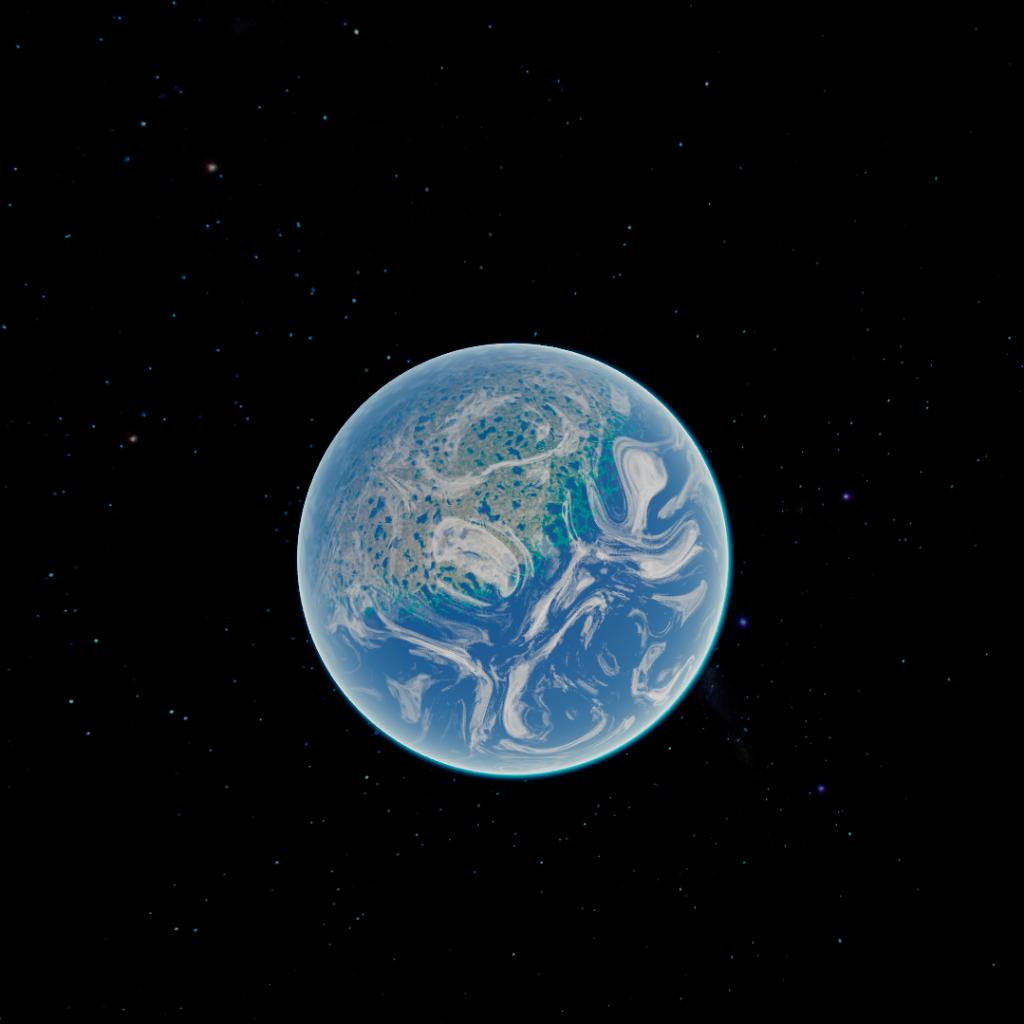Orcus: The Transformed Moon
Orbiting Planet: Tydos, a massive gas giant with swirling storms and vibrant auroras.
Pre-Gamma Ray Burst:
Surface:
Icy wasteland with vast ice sheets, especially concentrated at the poles.
Climate: Extremely cold, with temperatures rarely rising above freezing.
Life: Sparse, mainly microbial life forms adapted to extreme cold.
Post-Gamma Ray Burst:
Surface:
Transformed into a more diverse landscape with deserts and patches of grassland.
Climate: Warmer, with a more temperate climate allowing for the possibility of liquid water.
Life: Emergence of new life forms, including hardy plants and small, resilient animals.
Key Features:
Deserts:
Expansive sandy regions with occasional oases where life thrives.
Grasslands:
Small patches of grass and hardy shrubs, providing a stark contrast to the deserts.
Polar Regions:
Still retain some ice, but significantly reduced, serving as a crucial water source.
Atmosphere: Thinned but breathable, with a mix of gases suitable for sustaining life.
Unique Flora and Fauna:
Flora:
Hardy grasses, shrubs, and cacti-like plants that can survive in arid conditions.
Fauna:
Small, resilient creatures such as burrowing mammals, insect-like creatures, and birds adapted to the new environment.
Cultural Impact:
Droods’ Settlement:
The Droods have established small colonies on Orcus, utilizing its resources and studying its unique ecosystem.
Scientific Interest: Orcus has become a hub for scientific research, with Drood scientists exploring the effects of the Gamma Ray Burst on its environment and life forms.
SUMMARY
Pre-Gamma Ray Burst:
Surface:
Icy wasteland with ice sheets at the poles.
Climate:
Extremely cold.
Life:
Sparse, mainly microbial.
Post-Gamma Ray Burst:
Surface:
Diverse landscape with deserts and grasslands.
Climate:
Warmer, more temperate.
Life:
Emergence of new life forms, including hardy plants and small animals.
Key Features:
Deserts:
Expansive sandy regions with oases.
Grasslands:
Small patches of grass and shrubs.
Polar Regions:
Retain some ice, crucial for water.
Atmosphere:
Thinned but breathable.
Flora and Fauna:
Flora:
Hardy grasses, shrubs, and cacti-like plants.
Fauna:
Small, resilient creatures like burrowing mammals and insect-like creatures.
Cultural Impact:
Drood's Settlement:
Small colonies established by Droods.
Scientific Interest: Hub for research on the effects of the Gamma Ray Burst.
I decided to use this old Orcus that I uploaded, and it is sort of archived. I just added clouds and lore.
GENERAL INFO
- Predecessor: Orcus (4.5B years)
- Created On: Windows
- Game Version: 1.3.116.0
CHARACTERISTICS
- Radius: 270 km
- Sea Level: 700 m
- Surface Gravity: 1.3 m/s
- Rotational Period: 1d 3h 59m 60s
- Escape Velocity: 821.6 m/s
- Mass: 1.37E+21kg
Atmosphere
- Height: 459 km
- Scale Height: 67 km
- Surface Air Density: 1.200 kg/m3
- Surface Temperature: 280 K
EQUIRECTANGULAR MAP

5 Comments
- Log in to leave a comment
-
11.4k QuantumSpaceJNO5 months ago
@Hyperant It is not supposed to be realistic, I think it looks cool with land tbh.
-
16.1k Tallisar5 months ago
But I don’t get why there is still “land”, considering that Orcus is completely ice @QuantumSpaceIndustries
-
-





yo when did tydos capture a random dwarf planet